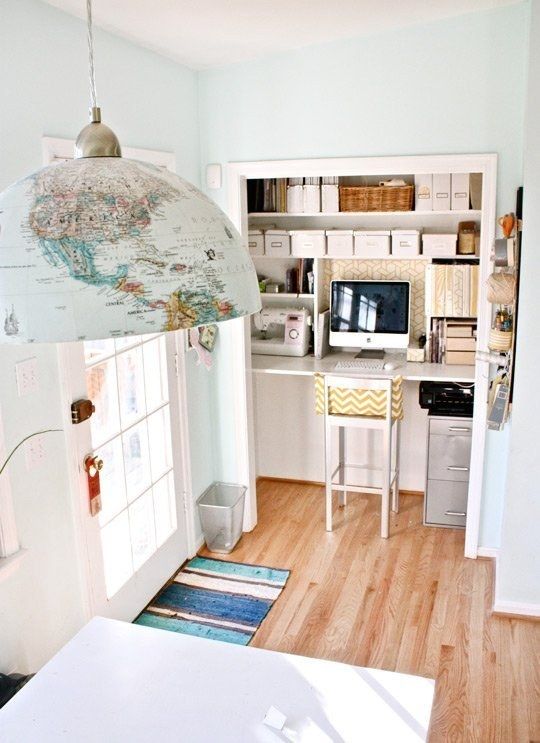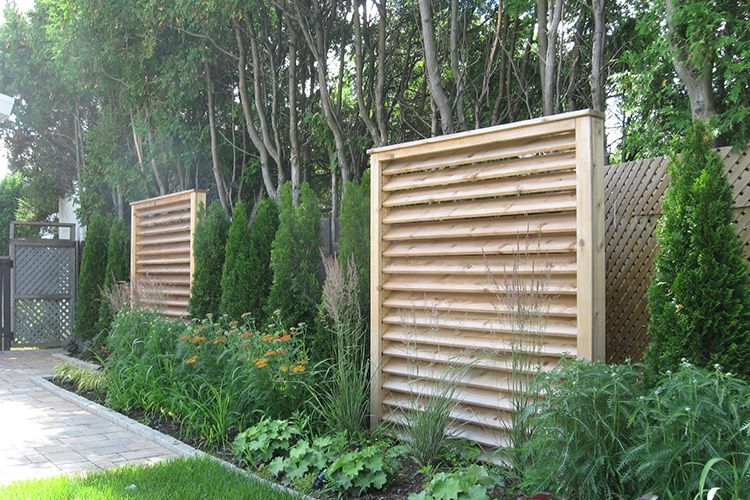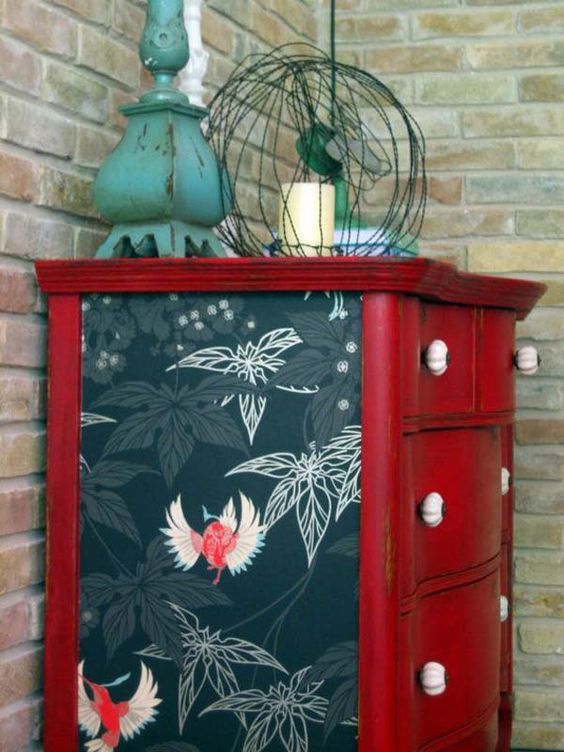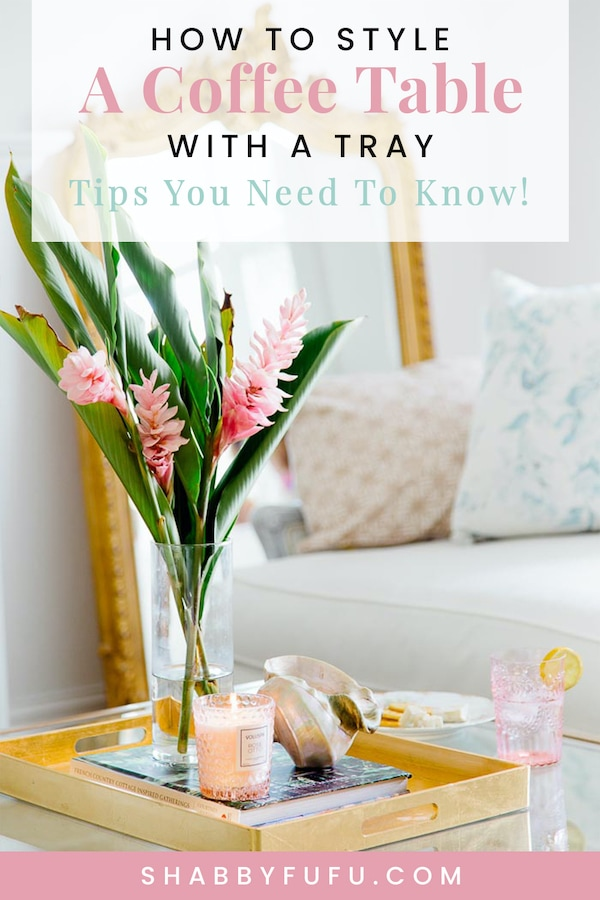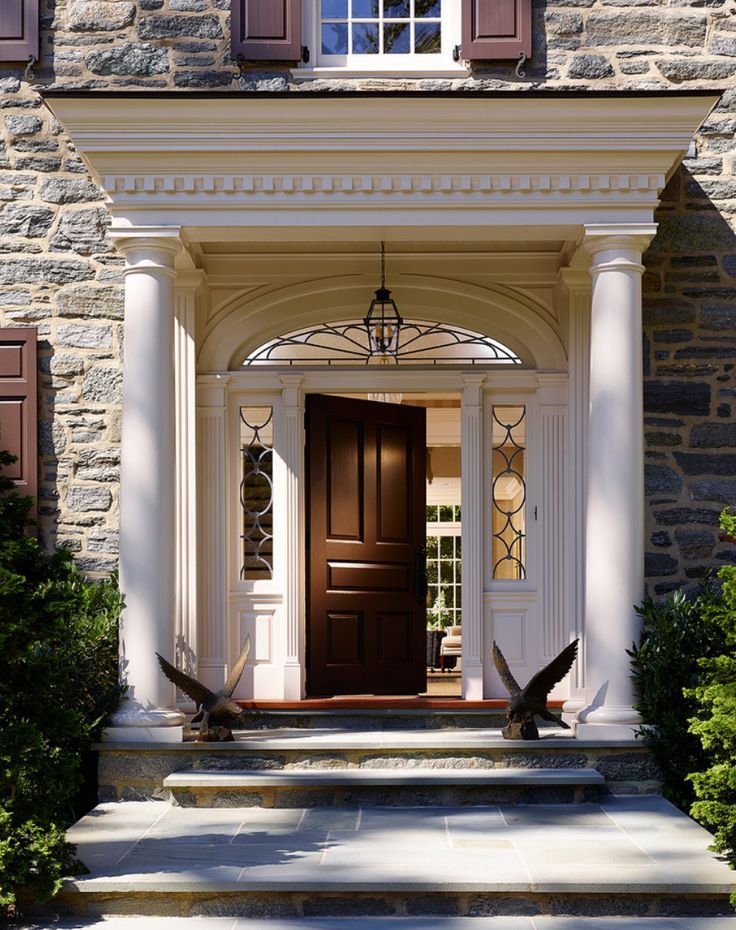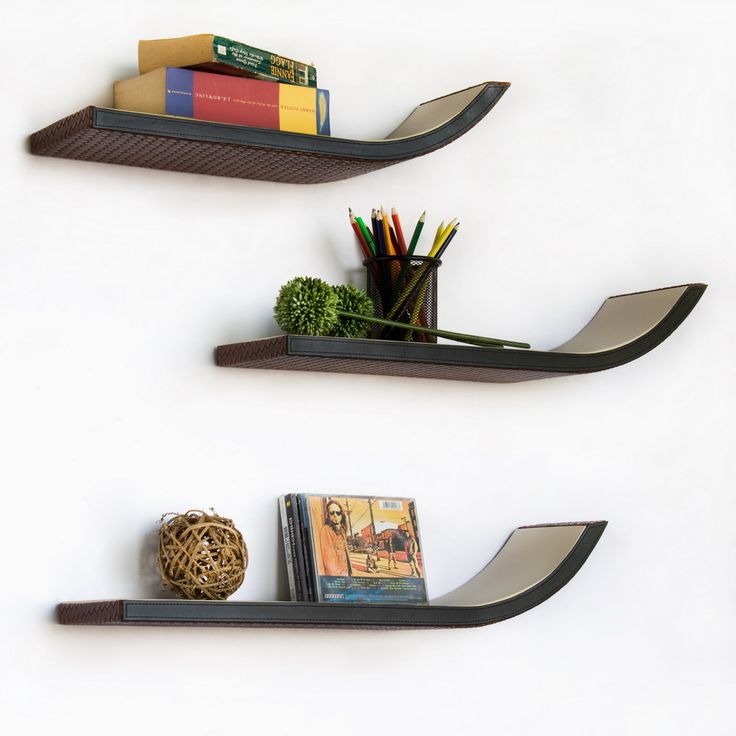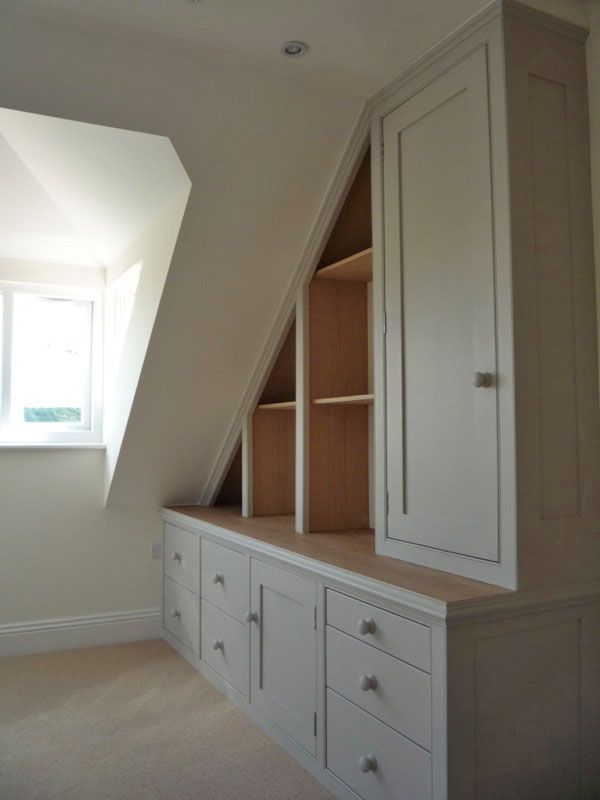Where to put a hedgehog house
Hedgehog Homes
IN THE WILD
Efficient winter nests are essential if hedgehogs are to survive hibernation. Thus, in autumn they begin to collect leaves, grass, straw, bracken, reeds etc. and use these materials for building their own nests under hedgerows, fallen logs or piles of brushwood. These “HIBERNACULA” prove to be surprisingly waterproof and good insulation against the cold.
IN THE NATURAL GARDEN
Most gardens have a supply of the materials mentioned above and suitable sites for nests – under sheds, compost heaps, shrubs and piles of leaves or behind stacks of logs and under spare building materials. In these circumstances, if hedgehogs want to spend a winter here, they should be able to get on and build their own shelters. However, you may wish to provide your ‘resident’ hedgehog with (or encourage any in the vicinity to become ‘resident’ in your garden by the provision of) a more permanent structure.
IN THE MORE FORMAL GARDENS AND IN OTHER ENCLOSED AREAS
Where hedgehogs are being cared for (eg after an injury or when orphaned) they will probably need nests made for them.
Feeding
Hedgehogs will not usually eat and sleep in the same place so it’s best not to offer food inside the home (except perhaps to tempt them in initially). Once there is a resident, move food away from the box so as not to attract predators or rival hedgehogs to the site. You can create a simple feeding station to offer food and water in by getting a plastic or wooden storage box, cutting a 13cm square gap in the one side and placing food underneath it as far away from the entrance as possible. A large stone or brick on top will help weigh it down and another around 13cm in front of entrance will make it more tricky for cats to steal the hedgehogs’ food! Offer good quality meaty hedgehog or cat biscuits and meaty cat or dog food. Tip: look for meat being first in the ingredient list.
HEDGEHOG HOUSE
This is a design that the Society recommends and is a more permanent type of home. Any available timber can be used (old or new) but the better it is made, the longer it will last.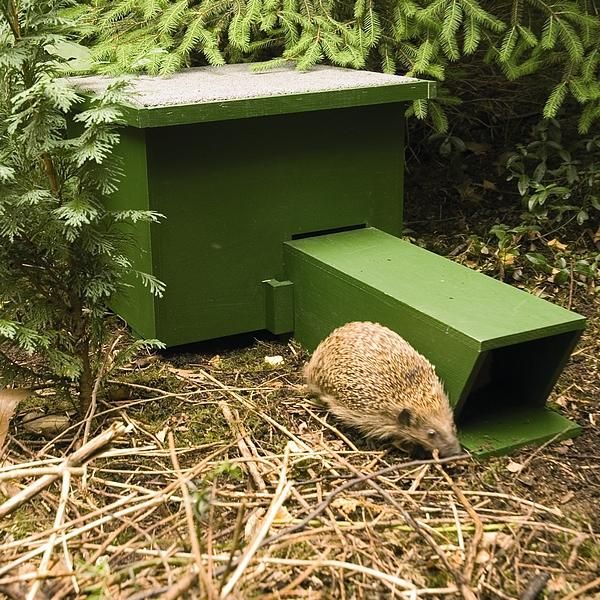 The wood can be treated with water based preservative only, on no account should the hedgehog house be creosoted or treated with non-water based preservatives as the fumes remain for a long time and can be very harmful. Do not nail down the roof as you may need to clean the box in the future. The entrance tunnel could be constructed with old bricks placed on top of each other with a piece of slate with a brick on top for the roof. Make sure the entrance is kept clear and avoid the temptation to disturb the hedgehogs. The finished home could be covered with plastic sheeting, soil and twigs placed on top, or left as it is. Straw and any leaves left outside may be taken in and used for bedding by any prospective resident.
The wood can be treated with water based preservative only, on no account should the hedgehog house be creosoted or treated with non-water based preservatives as the fumes remain for a long time and can be very harmful. Do not nail down the roof as you may need to clean the box in the future. The entrance tunnel could be constructed with old bricks placed on top of each other with a piece of slate with a brick on top for the roof. Make sure the entrance is kept clear and avoid the temptation to disturb the hedgehogs. The finished home could be covered with plastic sheeting, soil and twigs placed on top, or left as it is. Straw and any leaves left outside may be taken in and used for bedding by any prospective resident.
See illustration opposite.
HELPFUL HINTSWhen you have made a hedgehog house, place it in a quiet, shady, sheltered, dry spot in your garden (for example against a wall, fence, hedge or garden shed) with cover and hope that you will have a visit from a hedgehog seeking a home.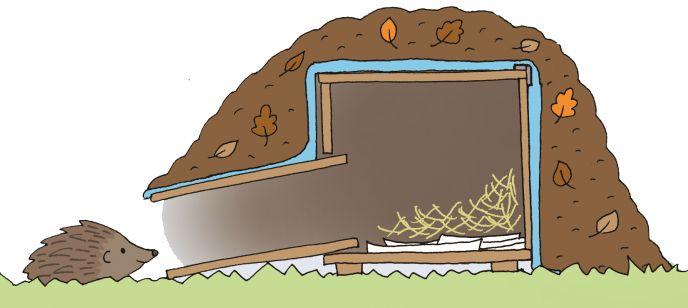 Make sure the entrance to the house does not face North or North East, thus avoiding the cold winter winds. It may then become the winter home for some lucky hedgehog. If female, she may even have her young in it in the spring. After winter use, late March/early April, some people like to clean the houses out (though they will also get reused if left alone). If you decide you want to clean the box out, do make sure there is not a hedgehog in residence before you disturb it. To make sure there is nobody in residence, put a small light obstruction in the entrance to see whether it is pushed away overnight; if it isn’t this is an indication that the hedgehog may no longer be in residence (but take care just in case). You can clean the house using hot water and scrubbing brush. DO NOT CLEAN IF A HEDGEHOG IS IN RESIDENCE. You might prefer to leave some clean bedding materials in a bundle by the ‘front door’ for the hedgehog to freshen up the home for themselves!
Make sure the entrance to the house does not face North or North East, thus avoiding the cold winter winds. It may then become the winter home for some lucky hedgehog. If female, she may even have her young in it in the spring. After winter use, late March/early April, some people like to clean the houses out (though they will also get reused if left alone). If you decide you want to clean the box out, do make sure there is not a hedgehog in residence before you disturb it. To make sure there is nobody in residence, put a small light obstruction in the entrance to see whether it is pushed away overnight; if it isn’t this is an indication that the hedgehog may no longer be in residence (but take care just in case). You can clean the house using hot water and scrubbing brush. DO NOT CLEAN IF A HEDGEHOG IS IN RESIDENCE. You might prefer to leave some clean bedding materials in a bundle by the ‘front door’ for the hedgehog to freshen up the home for themselves!
On no account should the hedgehog house be creosoted or treated with non-water based preservatives or paint as the fumes remain for a long time and can be very harmful. If used, water based preservatives should be on the outside of the box only.
If used, water based preservatives should be on the outside of the box only.
There are various “ready-made” hedgehog homes on the market, including the one that can be obtained from our Hogalogue. We suggest a solid construction with a base and a tunnel or internal baffle.
Where to put a hedgehog house to attract hedgehogs | Ark Wildlife
What you can do to help attract and encourage hedgehogs in your garden.
Hedgehogs require safe nests for sleeping, breeding and most importantly hibernation. These sites must be waterproof, warm, well ventilated and safe from predators and sadly more and more commonly safe from man. Hedgerows, fallen trees, wild areas and derelict buildings made up these suitable sites but our modern farming and gardening methods leave fewer suitable sites available to the hedgehog.
Every year hedgehogs are accidentally killed and injured in large numbers by strimmers, mowers, forks and fire as they seek nest sites in thickets, compost heaps and long grass.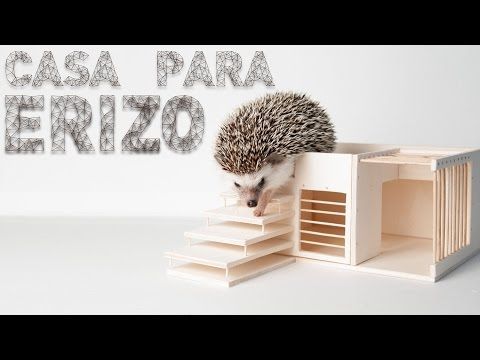 Additionally, research shows that 28% of hedgehogs fail to survive each winter, with severity of weather having the greatest impact. The weight of the adult hedgehog being key to survival. Any juvenile or hoglet found after the end of September weighing 500g or less will not survive without additional feeding.
Additionally, research shows that 28% of hedgehogs fail to survive each winter, with severity of weather having the greatest impact. The weight of the adult hedgehog being key to survival. Any juvenile or hoglet found after the end of September weighing 500g or less will not survive without additional feeding.
Top tips
Hedgehogs forage over wide areas up to 3-4 miles a night. You can encourage them to visit your garden regularly by providing access via a 4.5 inch gap in fences etc. along with hedgehog food and water at night throughout the summer. Providing a permanent shelter for sleeping will tempt them to set up home and a female hedgehog may even use a hedgehog house to have her young.
Where do hedgehogs live in the garden?
In autumn, as the days get shorter and nights get cooler, hedgehogs seek warm, dry winter quarters suitable for hibernation (you can check out our hedgehog hibernation calendar for more information).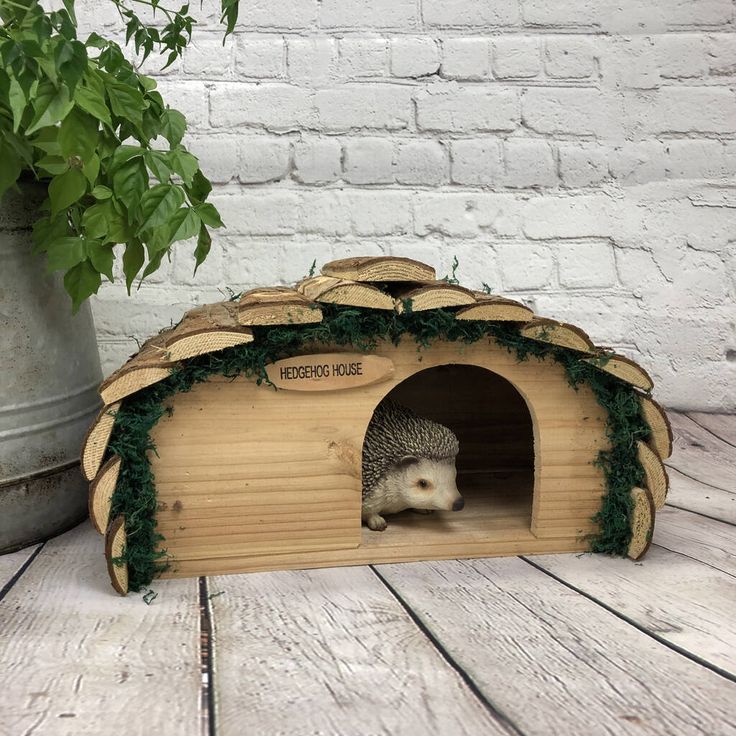 Once they’ve found a site, they’ll begin to collect leaves, dry grass, brush, etc. to form a nest. Hedgehogs generally like to nest at the base of thick hedges, under bramble bushes, underneath piles of rubbish or compost heaps, or close to garden sheds.
Once they’ve found a site, they’ll begin to collect leaves, dry grass, brush, etc. to form a nest. Hedgehogs generally like to nest at the base of thick hedges, under bramble bushes, underneath piles of rubbish or compost heaps, or close to garden sheds.
What to put in a hedgehog house
Partly fill the house with handfuls of leaves, grass or hay to make hedgehogs feel at home. These are ideal insulating materials and supplying them will give hedgehogs a head start on nesting, but be careful to leave room for more materials because foraging for them is an important ritual for hedgehogs.
Preparing a nest in this way will provide a hedgehog with a model nesting site, where they can safely give birth to and raise their young. But don’t be surprised if your hedgehogs visitors just use it for hibernation or even daytime naps.
Where to put a hedgehog house
The best place to put a hedgehog house out is a quiet, shaded position in your garden (ideally facing east to south), where the entrance hole will be shielded from bad weather.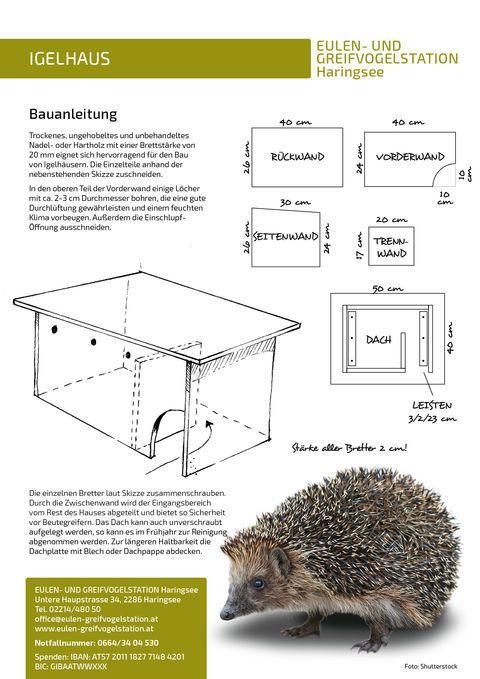
Hedgehog houses can simply be placed in a suitable location in the garden and left, but if you prefer, you can also partially bury them in the ground, under a log pile, compost heap or similar. Ventilation is provided at roof level and the entrance hole is slightly raised to accommodate this action. If you intend to partially bury your hedgehog house, we recommend placing roofing felt or plastic sheets under the runners to keep an air space under the box and reduce excess dampness in the nest chamber.
Top tips
Once the hedgehog box is in position, try to keep your distance and visits to a minimum as human smells and unnecessary disturbance may deter hedgehogs from taking up residence. To check if an animal is using the house, place a small, light object (such as some grass) in front of the entrance to see if it gets pushed away.
When to put a hedgehog house out
Since a hedgehog house can fulfil any number of purposes, there’s no bad time to add one to your garden.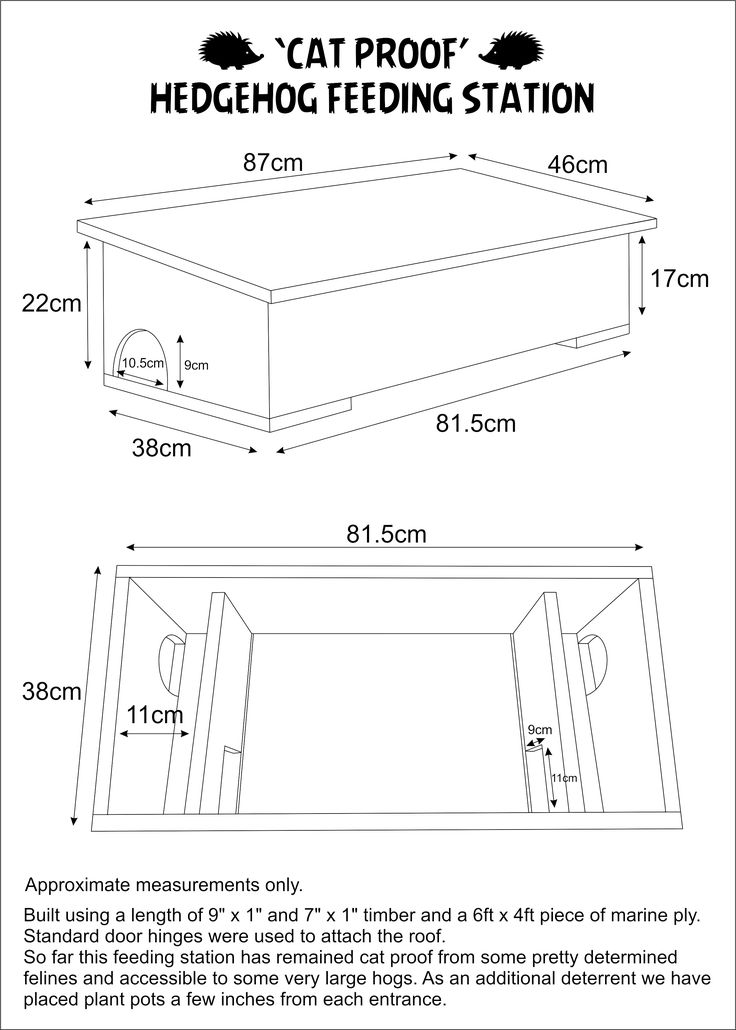
Put one out in the garden during spring and it’ll give hedgehogs a nice home after they’ve finished hibernating, which they might well use for raising hoglets. Or you could help local hedgehogs out by introducing a house around October, which will give them a great spot for hibernating.
Maintaining your hedgehog house
Hedgehogs carry many parasites such as ticks and fleas and in the wild will change nest sites regularly to avoid a build up of pests. In the garden we can help by cleaning out the nest chamber in April and October (post hibernation and post breeding season) as long as the house is empty. Remove and destroy all old bedding material and clean the interior with boiling water and/or scrubbing with slightly soapy water or veterinary approved disinfectant. Allow drying to take place before replacing the roof and then add new dry, clean hedgehog house bedding ready for the next occupant.
A well sited hedgehog house should be in a secluded area out of the weather but still allowing good air circulation. In such positions a purpose built Hedgehog House will last for many years with no further treatment. However, to increase the useful life of your hedgehog house indefinitely you may prefer to add additional protection, in which case you can cover the lid with roofing felt and apply a water based preservative (outside only) bi-annually. Do not use creosote or use a solvent/oil-based preservative because the fumes are toxic. There are lots of animal safe water based preservatives available from good hardware stores.
In such positions a purpose built Hedgehog House will last for many years with no further treatment. However, to increase the useful life of your hedgehog house indefinitely you may prefer to add additional protection, in which case you can cover the lid with roofing felt and apply a water based preservative (outside only) bi-annually. Do not use creosote or use a solvent/oil-based preservative because the fumes are toxic. There are lots of animal safe water based preservatives available from good hardware stores.
Top Tips
Hedgehogs naturally carry fleas and ticks and healthy animals will not be affected by them. If you find a hedgehog with excess ticks or in poor condition during the day, please consult a vet or your local hedgehog carer (see contacts below).
Related Internet Links:
British Hedgehog Preservation Society (BHPS) Tel: 01584 890 801.
St Tiggywinkles Tel: 01844 292292
Ark Wildlife is not responsible for the content of external websites
Choosing a house for a hedgehog - Hedgehogs
When choosing a house for your hedgehog, you can consider a variety of options: a cage, a plastic container, a box, an aquarium, a terrarium, a cardboard box, or just your entire apartment or house, in which the hedgehog will move freely.
I shoot a lot of videos about the everyday life of our kennel, where I show what conditions they live in, how the containers are equipped, how the hedgehogs have fun and communicate with each other
It would be better if the container was bigger. There should be enough space for a house, a free corner with a feeder and a drinker, a corner for a toilet, and you need to leave room for a wheel.
When choosing a cage or container option, consider sizes from 50 cm long and 35 cm wide. You need a height just enough to fit the running wheel inside.
I keep my pets strictly one at a time, in translucent plastic containers (open, without lids!!!) from Ikea, they wash well, are light and perfectly save the hedgehog from unnecessary drafts and noise. nine0003
If you want to buy a cage - feel free to take the option for rabbits or guinea pigs. Well, if you install tunnels and stairs inside the cage, in addition to the wheel, then the hedgehog will be happy to move in them, because they are very playful animals that love to explore objects and space.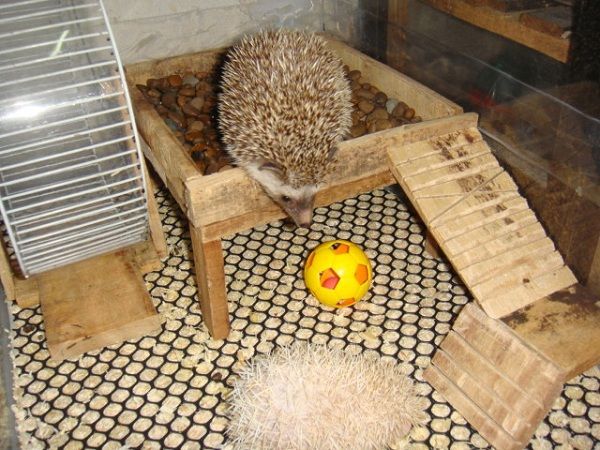
When choosing an open top container, pay attention to the material from which the container is made. The sides of the container must be slippery so that the hedgehog cannot get hooked and climb out of the container. Hedgehogs are good climbers and if you do not foresee it, he will definitely get out. nine0003
Under no circumstances should the floor be made of twigs, the hedgehog's feet are designed for walking on a solid surface.
The bottom of the cage or box can be filled with sawdust or cat litter (we use sawdust and straw based pellets), soft hay can be added. Sawdust should be used aspen, birch or the like. Do not use sawdust from arborvitae and other coniferous trees, as the essential oils of these tree species are toxic to the hedgehog.
If the hedgehog starts eating litter, you should replace it with another one. The filler must be changed at least once a week, and contaminated areas must be cleaned daily. The skin of hedgehogs is sensitive and when coming into contact with wet and damp filler, the hedgehog may develop dermatitis and infections. nine0003
nine0003
Also, the cage can be equipped with a house or a bag made of dense fabric in which the hedgehog will sleep. I installed wooden houses in each container or just put a bunch of hay in the corner, from which the hedgehogs make a comfortable mattress for themselves.
There must be water in the cage at all times. It can be a heavy plate that is difficult to turn over, or a hanging one that is attached to the walls of the container. You can also install a drinker for rodents with a metal ball at the end. These drinkers are very convenient to use, but remember that it is very important to wash it every time inside, because microbes develop quickly in the drinkers, in 1 day and it becomes covered with mucus from the inside. This can harm the health of your hedgehog. nine0003
We put the food on flat lids so that it is convenient for hedgehogs to eat. Read about what these animals eat in the section feeding the hedgehog.
The temperature in the room in which the hedgehog will live should be maintained in the range of 28-35 C. Hedgehogs are very fond of warmth and become lethargic, sleepy, irritable at low temperatures. They can even curl up into a tight ball and refuse to eat if the room temperature is low. Hedgehogs are sensitive to temperature extremes and high humidity. Do not place animals near heaters, fireplaces or in places where drafts can form. nine0003
Hedgehogs are very fond of warmth and become lethargic, sleepy, irritable at low temperatures. They can even curl up into a tight ball and refuse to eat if the room temperature is low. Hedgehogs are sensitive to temperature extremes and high humidity. Do not place animals near heaters, fireplaces or in places where drafts can form. nine0003
Hedgehogs have good hearing, try not to place the hedgehog box near speakers, TV, doorbells, appliances that make loud noises.
Now some information about how to train a hedgehog to go to the toilet in one place. It will take time for a small animal to learn to go to the toilet “in accordance with all the rules”. The duration of training for each hedgehog is individual. And the older the animal, the more difficult it is to convince him that you need to go to the toilet in a strictly designated place. Early litter box training is the key to success. nine0003
Therefore, as soon as a little pet has appeared in your house, it should immediately be taught to go to the toilet in a certain place. You must be consistent in your requirements in order to achieve the desired result.
You must be consistent in your requirements in order to achieve the desired result.
At first, the hedgehog's cage must be sterile, not only in terms of cleanliness, but also in terms of clutter with various objects (for example, a running wheel). Spartan furnishings are ideal: a bowl for water and food, bedding. Observe which corner your ward chooses for toilet needs and how consistent he is in his preferences. nine0003
If the hedgehog goes to the toilet in the same place for several days in a row, place a tray there and put the hedgehog's excrement in it. You can also dip a washcloth in the urine and put it in the tray too. Most likely, the hedgehog will return to this place to go to the toilet again. After the issue with the place for the toilet is resolved, you can furnish the cage "richer", purchase a house and a running wheel. These items are not recommended to be placed immediately, since it is likely that the hedgehog will adapt them for his "dirty" deeds.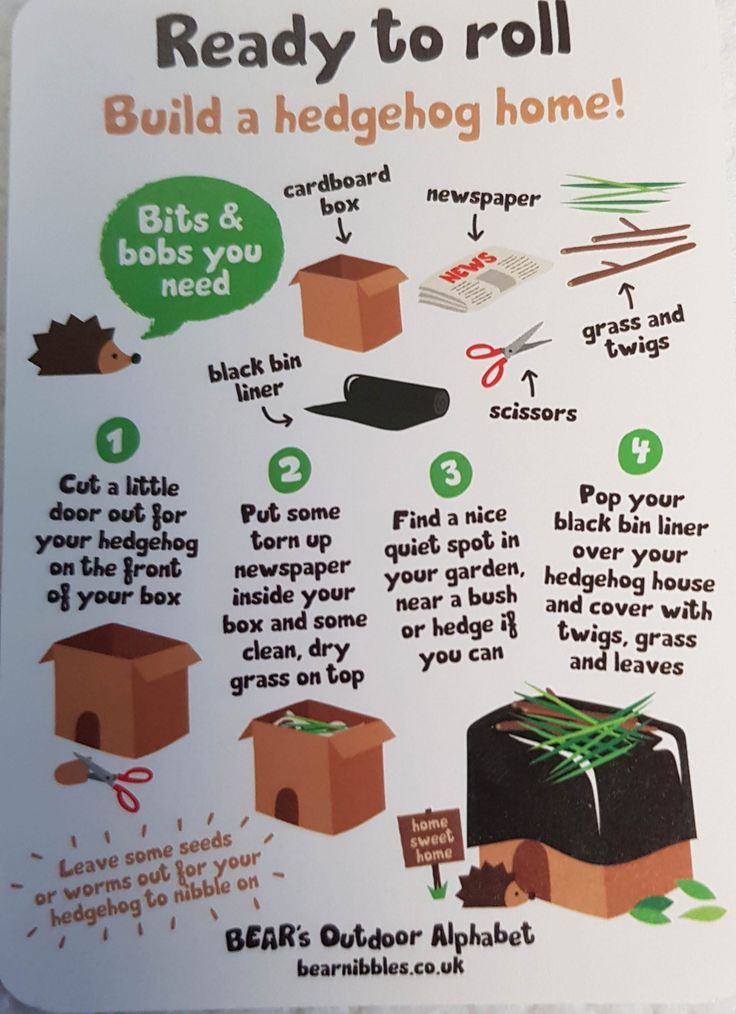 nine0003
nine0003
A hedgehog should buy a litter tray designed for ferrets. It should have high side sides, and the front and rear should be low. Sawdust should be used as filler for the tray. This is the best option for a small animal. Many people use cat litter for their convenience, as it doesn't get wet or clumpy.
Negative incentives will not help in training the hedgehog, you will not achieve the desired result. Do not throw and poke the hedgehog's face in the place where you found feces and urine, it will not work. The animal needs time to learn how to go to the toilet. Some hedgehogs can master it in a couple of days, others will need a month, and others will not learn how to do it, alas, never, especially for hedgehogs with already established “toilet” habits. Also, don't forget that even if your hedgehog learns to use the toilet, occasional "misses" can happen. nine0003
The toilet tray should be cleaned regularly. If the hedgehog chooses a different place for the toilet, then rearrange his tray to make it more convenient for him.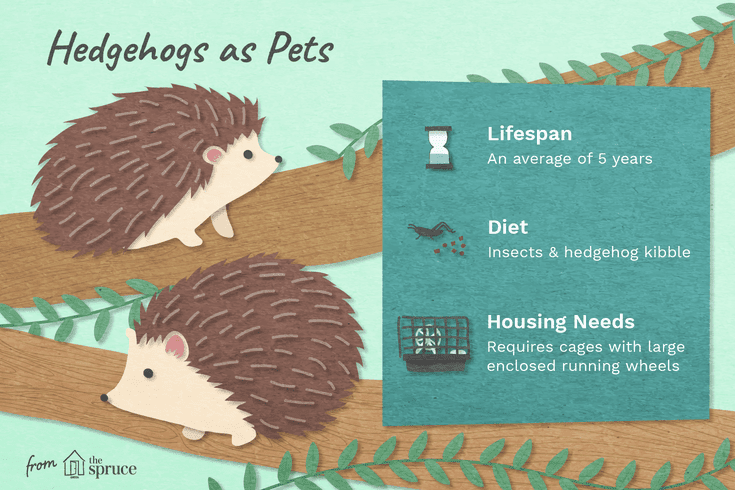
Hedgehog can use clean sawdust in the dust bath tray. Do not scold him and do not forbid him to do this, as hedgehogs do in natural conditions. Just buy him a larger litter box so he can bathe in it and pee. Reward your pet with favorite treats for regular trips to the toilet in a "sanctioned" place. nine0003
how to build dwellings for animals on your plot
Frogs, toads, lizards, hedgehogs are frequent guests at summer cottages. Probably, no one needs to be convinced that these animals are extremely useful. Each of the little helpers contributes to the gardener's struggle with numerous pests. In addition, forest guests are interesting to watch.
The frog needs a house too!
Especially a lot of vivid impressions and positive emotions in children who are interested in everything: where the lizard ran, and how the frog swims, and why the hedgehog has thorns. By the way, the latter are often taken into the house, sometimes even taken to the city with them, which, of course, is not at all good for the hedgehog. It is much better to build dwellings for animals on your site so that they no longer become guests, but good neighbors. nine0059
It is much better to build dwellings for animals on your site so that they no longer become guests, but good neighbors. nine0059
Frog house
If there is even a very small pond surrounded by plants on the site, most likely frogs will settle nearby very soon. From heat and sunlight, they can successfully hide in grass or temporary shelters, for example, under boards, pieces of slate or other objects that are nearby.
Where can a frog live?
The easiest way to build summer house for toads and frogs - put two bricks side by side at some distance from each other (on a long edge) and cover them from above with scraps of boards. Such a structure will come in handy if there is nowhere for amphibians to hide in your territory - the simplest shelter will help them escape from the summer heat.
If you have clay and the skills to work with it, try building the original fired clay house in the shape of a jug or pot.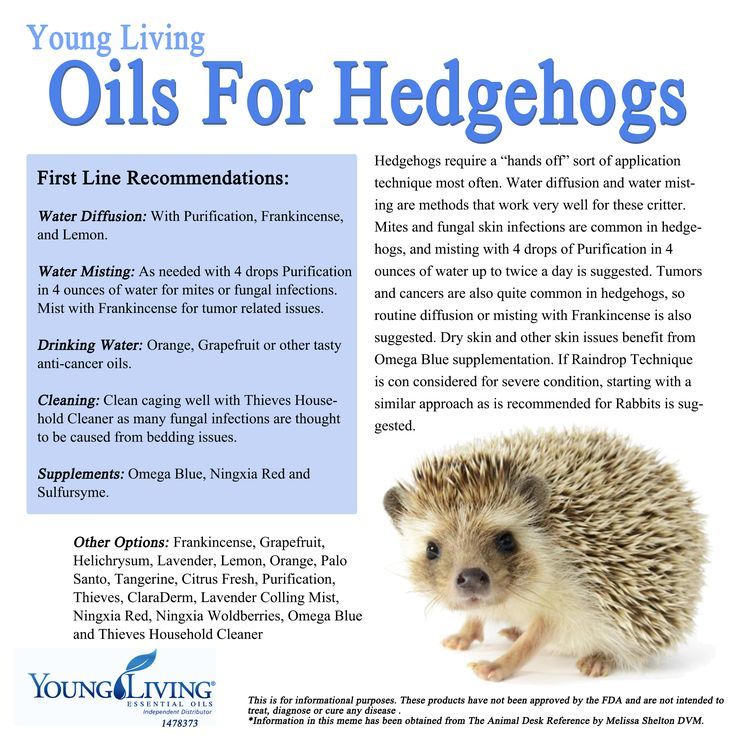 If not, an old clay pot, flower pot will do. Such a structure is installed on the ground upside down. Do not forget that there should be a hole at the bottom so that the frog can get inside the house. nine0003
If not, an old clay pot, flower pot will do. Such a structure is installed on the ground upside down. Do not forget that there should be a hole at the bottom so that the frog can get inside the house. nine0003
Some do it like this:
Frog house made of ceramic pot. Photo from lifeglobe.net
But a frog will hardly feel safe in such a shelter. Although in order to just hide from the heat, this option is also suitable.
The advantage of clay structures is their durability. Moreover, with age, acquiring a touch of "antiquity", they become even more interesting and can serve as an unusual accent of a decorative composition near a pond. Ready-made houses are also sold in specialized stores, but they are usually not cheap. nine0003
The frog will enjoy living by the pond. Photo by the author
If you want to provide your guests with a permanent home , you will have to work a little. Saw out two identical parts from wood in the shape of a semicircle or semi-oval.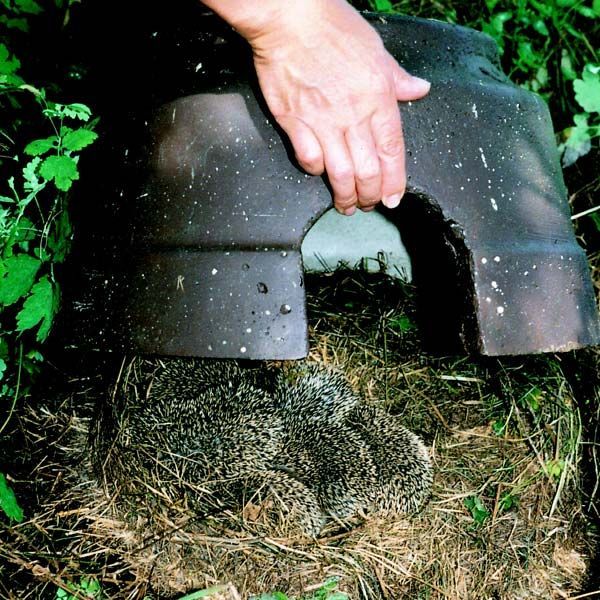 Place them parallel to each other at a distance of 15–20 cm and overlap from above (along the bend) with any suitable material (narrow boards, pieces of edged slab, and so on) so that a “bridge” is obtained.
Place them parallel to each other at a distance of 15–20 cm and overlap from above (along the bend) with any suitable material (narrow boards, pieces of edged slab, and so on) so that a “bridge” is obtained.
nine0059 In the lower part of the structure, along one of the semicircular base sides, cut a small hole near the ground itself - the entrance. If you want, you can make a small reclining hatch in the ceiling of the house - then you can sometimes look inside. Just don't disturb your neighbors unnecessarily.
Well, those who are not familiar with carpentry and pottery can make housing for amphibians from a small plastic bucket (for example, from mayonnaise). We cut out a hole-door, decorate the container with any natural materials (pebbles, pieces of bark, cuttings of branches, and so on) - and you're done! nine0003
House for a frog from a mayonnaise bucket, photo from kidskidki.ru
Frogs and lizards live on the plots of most summer residents. And many of you are happy to watch them - as, for example, the authors of publications plot
And many of you are happy to watch them - as, for example, the authors of publications plot
What do you think about the idea of making the life of these little neighbors and helpers more comfortable and safer? Which version of the house for amphibians did you like the most, and did you want to equip comfortable housing for frogs in the new season?
Hut for the hedgehog
Hedgehogs can settle anywhere on the site: under the porch, under a pile of brushwood, among construction debris. And yet, these unpretentious animals will be grateful for a comfortable home in which they can winter and breed. nine0003
Hedgehogs are frequent guests of suburban areas
Among adult hedgehogs there are rather large individuals, so their dwelling should be spacious enough. The height of the house can reach 25–30 cm, the optimal length of its sides is from 35 to 40 cm. Here, for example, wicker house (you can buy it or, if you have the necessary skills, make it yourself) will serve as an original decoration of the site, but it is hardly suitable as a year-round shelter for hedgehogs: the lightweight construction does not save from rain In the next video - a master class on construction hedgehog house made of two ordinary construction buckets . You will also need a balloon of mounting foam, some tools and “very skillful hands” :) “Cinema” without words, but everything is clear, because it is shown in great detail: If this option seems too complicated and time-consuming to you , try using an idea from another video. This house is built from a cardboard box and scrap materials - old bricks, branch cuttings, moss, dry grass, leaves, and the like. It is not as attractive in appearance as the previous one, but hedgehogs, I think, care more about convenience than about the beauty of their home It is better to make the roof of the house removable - so you can clean it if necessary. It is not bad to provide it with a floor that will protect the inhabitants from dampness and cold. You can even install the hut not directly on the ground, but on small supports (for example, from a bar). In this case, the porch-corridor should be made inclined (by the way, the building in the photo above clearly lacks a porch-tambour). nine0003 Whichever option you choose, it's important to find a good place to build: hedgehogs will prefer secluded corners of the garden where no one will disturb them. You can put a house in the bushes, or near the fence (but not at the gate itself), or behind the shed - choose a location that will be convenient first of all for future residents.
The shape of the hut can be any - it all depends on your imagination and skill. But one condition is obligatory: a small corridor (about 25 cm long) must be attached to the entrance , which will not allow predators to enter the hedgehog's dwelling. nine0003
Wicker house for hedgehogs, photo from weather-station-products.co.uk
If you want the building to be comfortable, durable and beautiful at the same time, you should think about wooden house . It is perhaps no more difficult to make it than a birdhouse, so your forest guests can celebrate housewarming next summer. In extreme cases, such a hut can also be bought - ready-made models are found in online stores.
Choose durable wood for construction; It is desirable to provide the roof and floor with a waterproofing layer.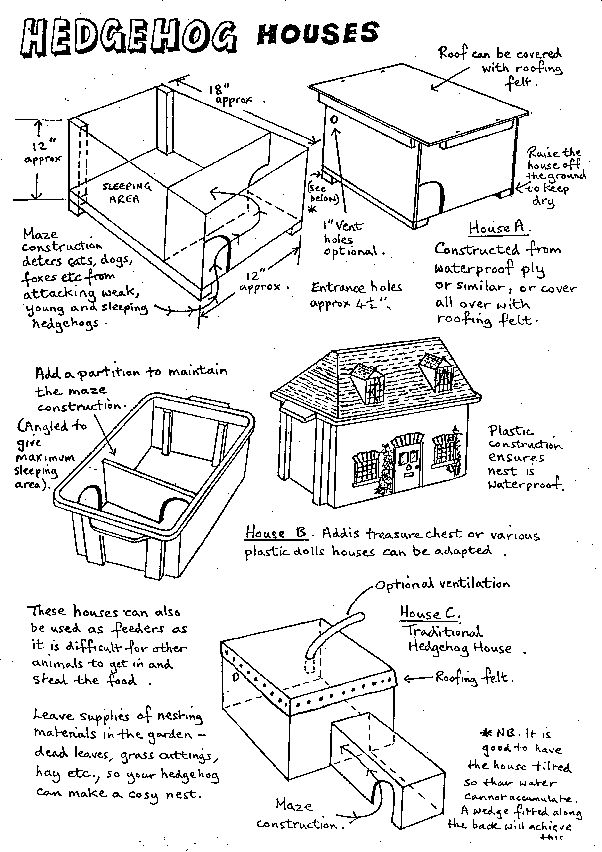 Having settled in the house, hedgehogs, of course, will take care of its internal “decoration”, but if you lay dry foliage inside in advance, your guests will be grateful. nine0003
Having settled in the house, hedgehogs, of course, will take care of its internal “decoration”, but if you lay dry foliage inside in advance, your guests will be grateful. nine0003
The wooden house is both reliable and beautiful. Photo from the site 107.r.photoshare.ru 
Learn more
